species
- Barbastella
- Eptesicus
- Myotis
- Nyctalus
- Pipistrellus
- Vespertilio
Natterer's bat Myotis nattereri
Natterer's bat (Myotis nattereri) is a small to medium-sized bat species, widely distributed in Europe. Prefers to prey on spiders.
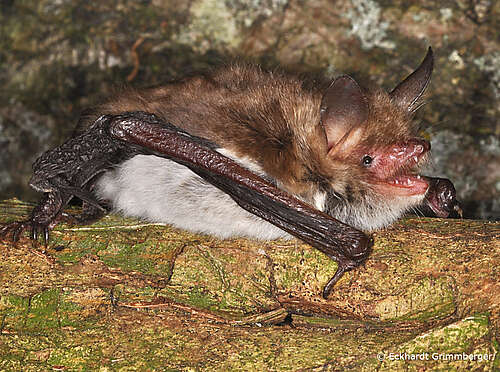
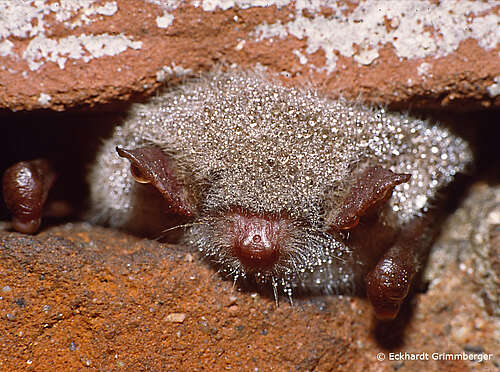
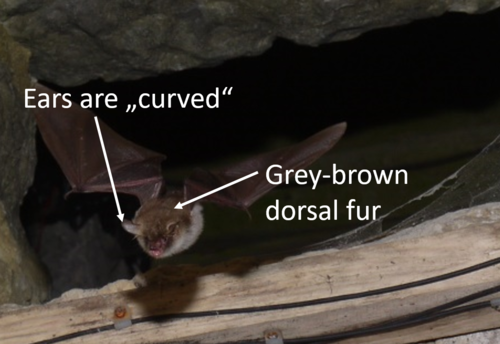
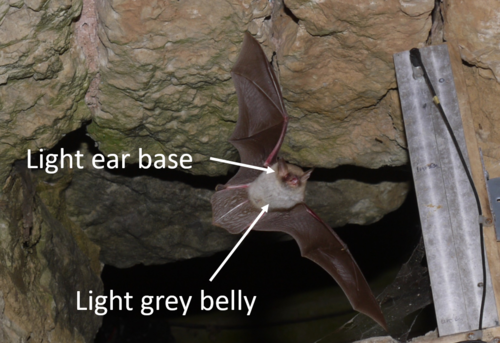
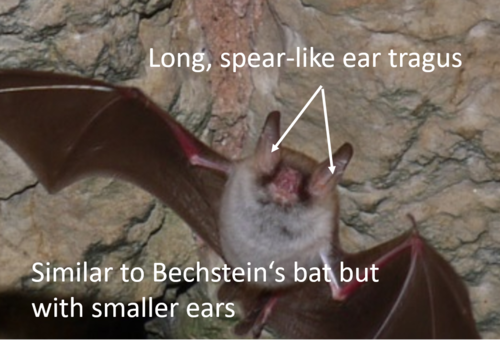
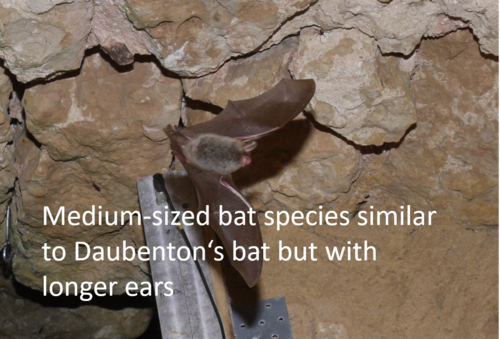
characteristics
| habitat description | In almost all types of forests, including sparse forests with aisles, parks, dirt roads with shrubs, orchards, ponds and small rivers. |
| quarters | Nursery colony associations of 20 to 50 individuals in tree cavities, bird and bat boxes, crevices, shutters, rarely directly in buildings, but in unplastered hollow blocks. Frequent changes of roost and alternate splitting into sub-colonies ("fission fusion"). Hibernates from October to April underground in caves, tunnels, bunkers, cellars in crevices or among boulders. |
| reproduction | Young born between early June and early July. Young independent after about four weeks. Mating occurs both during the swarming season (main swarming season in September/October) and in the hibernation sites. |
| size | - Head-torso length: 42 - 50 mm - Forearm length: 34 - 44 mm - Wingspan: 240 - 280 mm. |
| weight | 7–10 g. |
| color/fur | Upper side gray to gray-helbrown (older individuals), underside light, gray-white. |
| nose shape | Slender, flesh-colored snout. |
| ear shape | Relatively long ears (e.g., longer than Daubenton's bat but much shorter than Bechstein's bat), slightly curved shape. Long, pointed, spear-like tragus longer than half the ear, unlike Daubenton's bat. |
| wing shape | S-shaped spur on the tail membrane. Edge of tail membrane with dense bristles. |
| flight | Swirling or shaking flight. Relatively slow, but very agile. Often directly over shrubs. Reads prey directly from vegetation with tail membrane ("gleaning") or catches it in flight. Can also move well on the ground. |
| ultrasonic calls | Very strong frequency modulation. Start frequency at 100 - 150 kHz, end frequency at 20 - 35 kHz. No clear main frequency, this ranges between 32 and 48 kHz. Therefore very dry calls. Tends to rise and fall calls near shrubs and treetops. The enormous frequency bandwidths are striking. Nevertheless, strong similarity to Daubenton's and whiskered bats, as well as with brown long-eared bats. |
| endangerment | Populations seem to be stable overall. Red List of Germany (2020): Not endangered. IUCN (2019): Least Concern. |